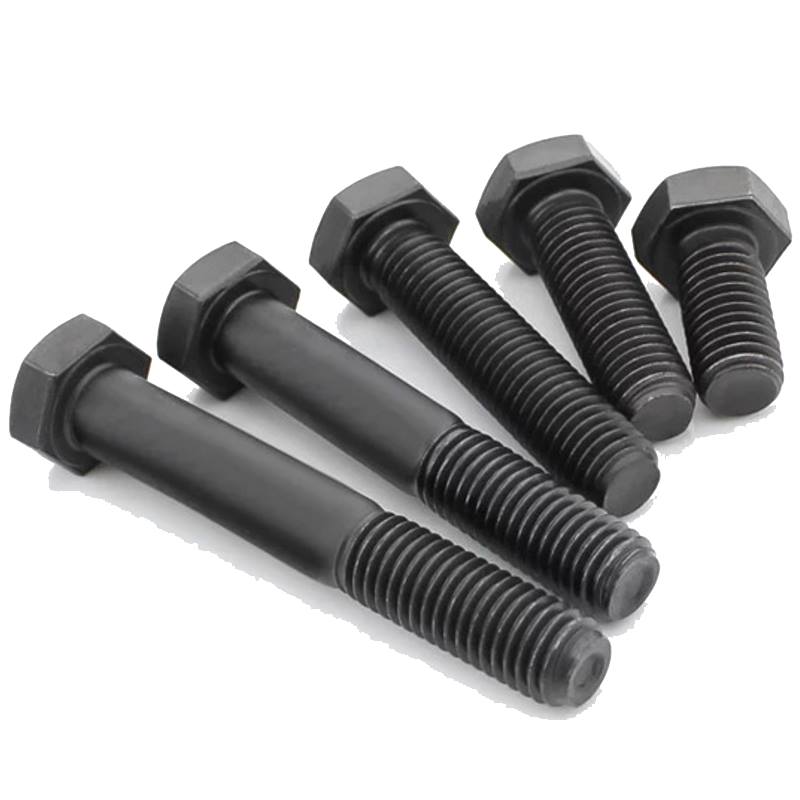high quality bridge bolts
Dec . 14, 2024 21:07 Back to list
high quality bridge bolts
The Importance of High-Quality Bridge Bolts in Structural Integrity
When engineering a bridge, the fundamental aspect that cannot be overlooked is safety. Bridges serve as vital infrastructure, facilitating transportation and connecting communities. To ensure their longevity and performance, every component must be meticulously selected, and this is especially true for bridge bolts. High-quality bridge bolts are crucial for the structural integrity of any bridge, and their selection should be approached with diligence and an understanding of their importance.
Understanding Bridge Bolts
Bridge bolts are fasteners specifically designed to join various elements of a bridge, including steel beams, girders, and deck plates. They must be able to withstand significant loads, vibrations, and environmental conditions. The structural demands placed on them are immense, making it essential to use high-quality materials and manufacturing processes.
These bolts come in various grades and sizes, with each classification reflecting their tensile strength, yield strength, and resistance to corrosion. The most common materials used for bridge bolts include carbon steel and stainless steel, with coatings often applied to enhance their durability and resistance to rust.
The Role of High-Quality Materials
Quality materials are central to the performance of bridge bolts. High-strength steel bolts, classified by standards such as the ASTM A325 or ASTM A490, offer the mechanical properties required for heavy-duty applications. The use of high-quality steel reduces the likelihood of bolt failure due to overload or shear forces. Furthermore, the ductility of the steel allows for slight deformations without failing, which is critical during moments of high tension and stress.
In addition to strength, resistance to corrosion is another vital factor. Bridges are exposed to harsh environments, including rain, snow, and road salt. Corrosion can significantly weaken the bolts over time. This is why many engineers opt for galvanized or stainless steel bolts, which provide a necessary barrier against environmental factors and extend the lifespan of the bolts and, consequently, the bridge.
Manufacturing Processes That Ensure Quality
high quality bridge bolts

The manufacturing process also plays a critical role in the overall quality of bridge bolts. From the initial forging of the metal to the final coating, each step must adhere to stringent quality control standards. Quality assurance protocols are critical in this process, including tensile testing, metallurgical inspections, and corrosion resistance evaluations.
Advanced manufacturing techniques, such as cold working and heat treatment, improve the performance characteristics of bolts. Cold working increases strength through strain hardening, while heat treatment ensures the right balance of hardness and ductility. In a world where shortcuts can lead to catastrophic failures, diligent adherence to high manufacturing standards is non-negotiable.
Importance of Proper Installation
Even the best-quality bridge bolts can fail if not installed correctly. The installation process should involve proper torque specifications and alignment to ensure that each bolt functions as intended. Engineers must consider factors such as bolt tension, friction between connected surfaces, and the potential for bolt relaxation over time. Regular inspections during and after installation are vital to maintain the integrity of the bolted connection.
Using high-quality bolts also involves selecting the right type for the application. Whether a bridge is an arch, suspension, or cantilever structure, the bolts’ design and characteristics must match the specific engineering requirements. Failing to account for these nuances can lead to structural issues and safety hazards.
Conclusion
In summary, high-quality bridge bolts are vital for the safety, durability, and longevity of bridge structures. The combination of high-strength materials, robust manufacturing processes, and careful installation practices all contribute to the overall integrity of the bridge. Engineers, architects, and construction teams must prioritize the selection of high-quality bolts to ensure the safety and reliability of the bridges we depend on every day.
As infrastructure ages and the demands on our transportation systems grow, understanding the significance of quality in every component—from the largest beams to the smallest bolts—remains paramount. Investing in high-quality bridge bolts is not merely a matter of choice but a commitment to fostering safer and more resilient communities. Ensuring that every bridge stands the test of time relies significantly on these often-overlooked yet critical elements of bridge construction.
Latest news
-
High-Quality Panel Stud Bolt Reliable Panel Stud Bolt Factory & Suppliers
NewsJul.08,2025
-
High-Precision Fine Thread Locknuts Manufacturer & Supplier Custom Solutions
NewsJul.08,2025
-
PH Imperial Stud Bolt – High Strength Fasteners from Leading Supplier & Factory
NewsJul.07,2025
-
High-Quality Allen Wrench Bolts Leading Factory, Company & Suppliers
NewsJul.07,2025
-
Wholesale Ball Stud Bolt - High Quality Supplier & Factory Price Reliable Wholesale Ball Stud Bolt Company
NewsJul.06,2025
-
High-Strength Alloy Bolts Manufacturer & Supplier Quality Alloy Fasteners Factory
NewsJul.06,2025
